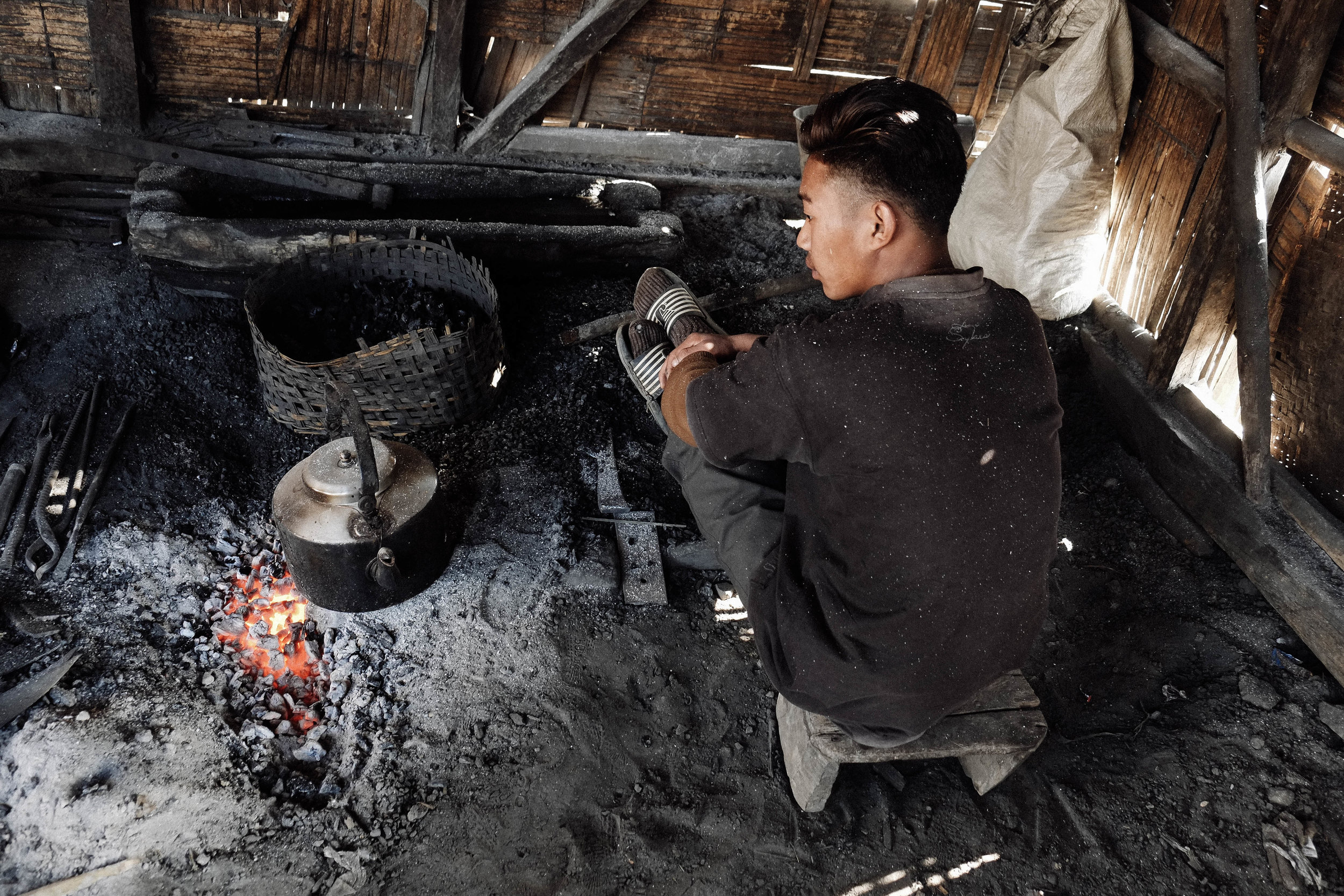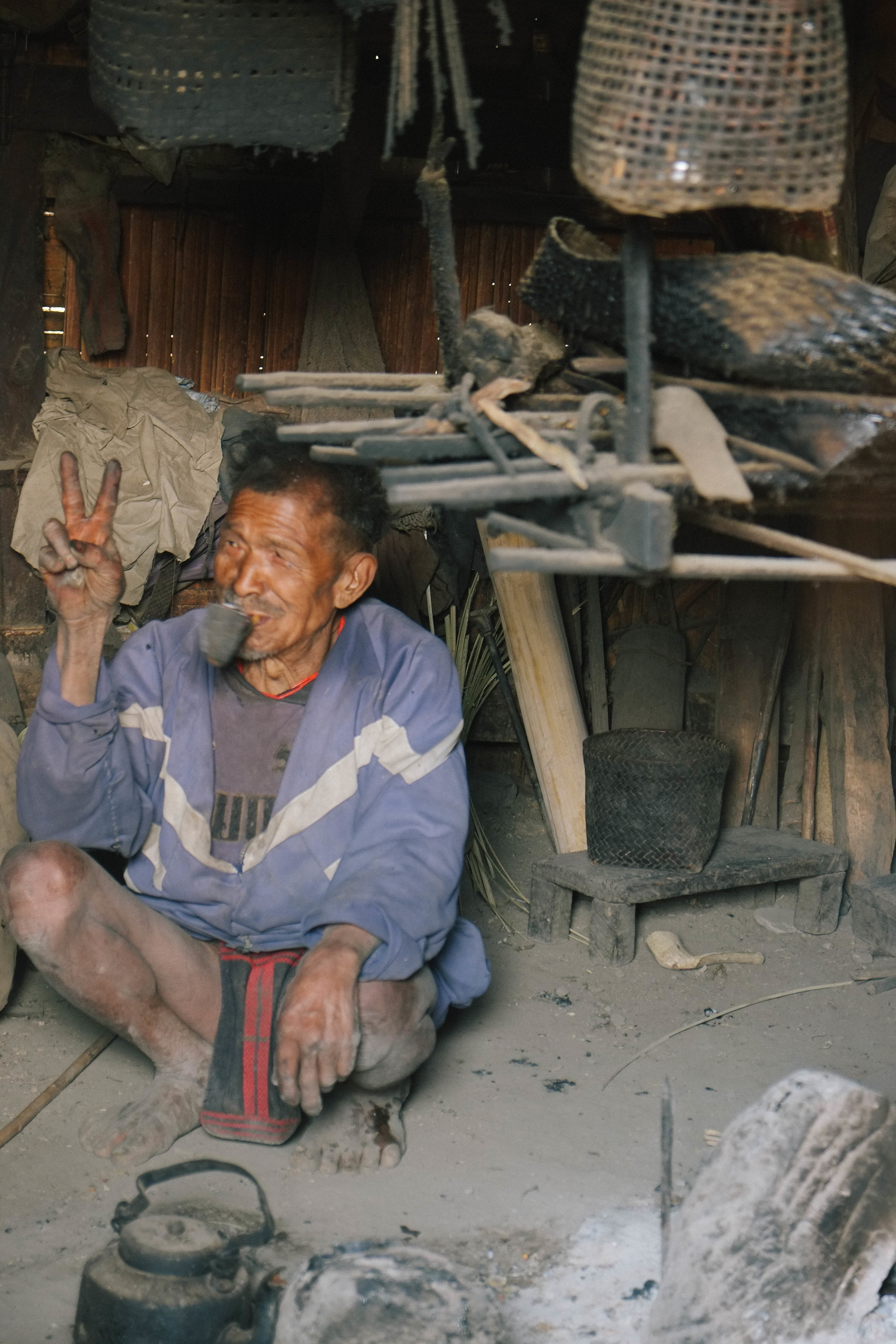The trip undertaken by the LRD was an assessment tour of their Integrated Watershed Management Programme (IWMP), a government of India initiative implemented countrywide under the Pradhan Mantri Krishi Sinchayee Yojana (PMKSY) scheme. Under the watershed development programme, the LRD also had a sub-project: Special Programme for Economic and Environmental Development, better known as ‘SPEED’, a five-year programme. The individuals working under these projects are known as the Watershed Development Team (WDT) members.
A more concise article (official report) of the trip and their assessment can be read HERE
Not far from Kengjung, Wui was the next planned stop. However, Wui was not part of any project or scheme. They were scheduled to be included in a project in the next financial year. This was more of an assessment stop; to forge the mark of the department.
Wui was yet another tiny village but they had immense potential for self-sustenance. We were greeted as usual by the Village elders and council members and taken in for a formal meeting. This is the time when they would narrate the plight of the village or gently demand more funds. The speaker at Wui didn’t spend too look narrating their plight. He just got to the point, stated that they didn’t have time to draw up a petition. In fact, he said he didn’t see a point in it. If they’re meeting face to face, he might as well tell them in person rather than having that petition end up in a dustbin.
He did mention that even out of all the Khiamnuingan villages, theirs was almost unheard of due to their location and lack of communication and through this, he narrated a very interesting story, while addressing the Director of the department. “I’m not praising you. I just want to narrate a story of joy for our village that was brought upon by another Lotha” he said (I should mention here that until recently (August 2016), the Director of the Land Resource Department was Mr. Mhathung Yanthan, who belongs to the Lotha tribe) and the current District Project Officer (of Tuensang) is also a Lotha.
He told us about how from 1985 till January of 2011, a Lotha gentleman by the name of Arhomo Kikon, from the department of Geology and Mining, visited Wui along with Dr. Anungla Aier, Dr. Thomas Oliver of Oxford University, London and Toshi, ex MLA.
“We don’t know what goes on in other villages but thanks to Arhomo, we got some recognition and from time to time, we have people who come to visit us, just like you. If we don’t tell you about our problems when you visit, it is much like being thirsty and not asking for a glass of water. It’s going to leave us a little unsatisfied and unhappy” he said.
Personally, I was shocked at his story, eloquence and his analogy. In fact, he even said that while everything they have today in the village is backward, he hopes that the department could sow the seeds for them to move forward. And he used the English words for “backward” and “forward”. I have a feeling that going forward wouldn’t take took long if there are leaders like this man.
The story came as a shock to me because the man that he spoke of, Arhomo Kikon, was a collegue of my mother. Mr. Kikon passed away in October 2015 and I remember my mom telling me that he was more or less one of the leading scientists in their department and that his death was not just a loss to the family and friends, but also to the department and the Lotha community.
We were taken for a tour of the village and I don’t think I am overstating this: we were all blown away. This was a first time visit for almost all of us and we saw what this village was about. This little village was blessed with mineral resources (hence the visits from the Geology of Mining Department) and because of this, they have carried on a tradition and technique of pottery and iron smelting from their forefathers. These are both very unique skills to inherit in any village. They are confident about the survival of the smelting technique as we could see older men folk working in tandem with the younger generation but it was their pottery technique that could well vanish. The beauty of their pottery lies quite literally in the hands of the potter and as of now, there are only three elderly women left practicing this art. The shaping and smoothing of the pots and urns are all done manually. There was no trace of even a pottery wheel in sight. I personally wished that the younger generation would take an interest to keep this art alive because it could become very significant in the future.
The village also has a story of a ‘buried treasure’. Legend has it that during the peak of resistance, it was discovered that the region has deep riches in iron minerals and it was hidden by the insurgent groups to protect it from the Indian government and it will only be unearthed with Nagaland is ‘free’ from India.
We trekked to the region where the said iron was previously said to be excavated. It is also an archaeological dig site and after excavating just three feet below, it was determined that the village of Wui is at least 800 years old.
Just to give you a very quick explainer without the needful details (hopefully I will write something regarding this subject in days to come), Nagaland has been fighting for independence from India since the 1950s. Talks began as soon as the British administration left India for good but it soon became a predominant cause in the late 50s, continuing into the 1960s. insurgency groups began cropping up and the Indian army stationed in the state began pursuing members and leaders and it ended up a state of bloodshed. Their treacherous behaviour of burning villages and raping women has still not been forgotten by the older generation. In terms of history, it is still quite recent which makes it extremely hard even today for people in Nagaland to trust the Indian army.
The fight for freedom still lives on but what began with a real cause and concern has today turned into a weak movement that no one is concerned with. These so-called freedom fighters today just use means of extortion looking for handouts. Besides, logically and rationally it will be absolutely impossible to sustain Nagaland on its own. Let’s not forgot about the “peace accord” that was signed last year though. It has been over a year now and yet, not even the government officials know the contents of it. it is seemingly still a secret between the Modi Government and the National Socialist Council of Nagaland (NSCN) and that fervour seems to be long dead and gone and I for one am glad. Why? Because the contents are still unknown. It’s called a peace accord but peace in terms of what? What was negotiated? What was discussed? What was traded? I might as well belt out The room where it happens right now.
Coming back to independence though: can you imagine the state of villages like Wui if Nagaland were to become independent? Right now the support for rural development comes straight from the central government. If we were to break away, there would be no way to get the right number on funds to give the rural areas any real sense of paving their way forward. In any case, almost all villages still rely on farming as a way of live with little or close to no livelihood.
Each of us were given a clay pipe as a gift but we also bought some of the clay pots. I was thinking out aloud to one of the WDT members that they should be selling these and he said that last year, he initiated a plan where they were sold during the Hornbill Festival. I hope that more of these initiatives are taken. It’s not about the number of sales or even about bringing in the odd visitors and tourists because of their rare skills. It’s more about making do with that you have. The village of Wui is fortunate. From what we saw, they have good leaders within the village. I hope they don’t succumb to the cycle of free aid and inspire a change.
There was also another aspect of interest in Wui: The Village Guards. Not all villages have their own dedicated guards but those closer to the border areas do and from the looks of it, they are dedicated in their service. They aren’t paid much but it does provide employment and a monthly wage which is not something many people from the rural areas can say. It also takes them away from the village for a while (training etc.) which means a chance to live and experience an urban life. They are always in uniform with their weapons by their side and our brief hours in Wui were spent under their watchful eye as they served both as guides and guards. I am quite certain than having to accompany government officials definitely gave them a sense of pride as well and rightly so. They were genuinely nice folks glad to do their job.
Our vist to Wui ended on a light note. We met who is said to be the oldest man in the village. From the looks of it, he was definitely under the influence of something and attached to him was an extremely old, extremely blackened pipe. It seems that he has had it for years and we were certain that most of his days are spent smoking that. We couldn’t communicate with him but he was happy enough to take some photographs with people as well as to be photographed. One of the WDT members showed him to do the peace sign and it was quite a funny moment as he did it ever so happily.
By the end of it, even the officers wished that they had more time to explore Wui. I’d like to go back one day, maybe in a few years to see what state they are in. There’s a huge misconception about travelling in Nagaland. It’s not easy and it’s not cheap. I hope I can find a way though. I really do.
JANUARY 11 - 17, 2016















